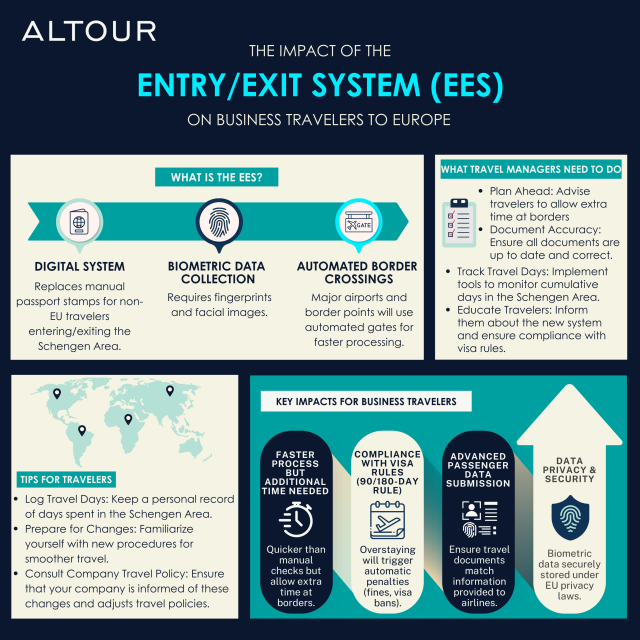Starting on 10th November 2024, a new Entry/Exit System (EES) will be rolled out across the Schengen Area. If you’re travelling to Europe for business, this new system will change how you enter and exit the region. The EES is designed to improve security and make things more efficient by replacing passport stamps with a digital, biometric-based process.
Here, we’ll break down the key changes and share tips on how travel managers and business travelers can prepare.
What Is the EES?
The EES is an electronic system that logs when non-EU travelers enter, exit, or are refused entry to Schengen countries. Instead of getting your passport stamped, the system uses your fingerprints and facial image to keep track of your movements.
For those unfamiliar, the Schengen Area consists of 27 European countries that have abolished internal borders for the free and unrestricted movement of people. To see the full list of Schengen countries, click here.
Check out our infographic above for a quick visual on how this new process works, including how biometric data will be collected and how the new automated gates will speed things up at airports and borders.
The good news is that the EES should make things quicker once you’re through the initial steps. However, it’s still a good idea to allow for a bit more time at the border, especially while everyone adjusts to the new system.





